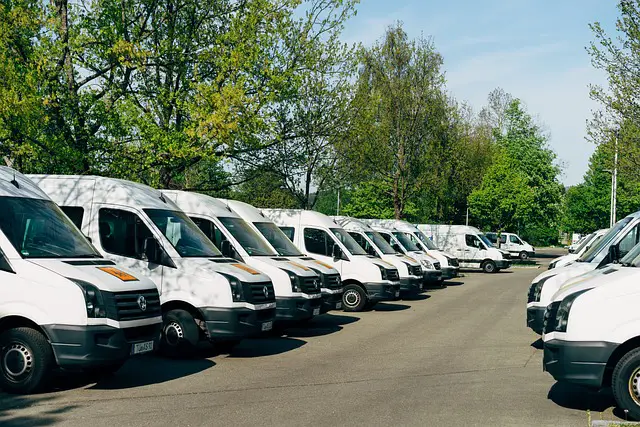A Comprehensive Guide to Obtaining an Operators Licence

Operating a business that involves transporting goods or passengers requires careful adherence to regulatory standards. One crucial aspect is obtaining an Operator’s Licence. This comprehensive guide will walk you through getting an Operator’s Licence, covering key aspects such as eligibility criteria, application procedures, compliance requirements, and ongoing responsibilities.
Understanding the Basics: What is an Operator’s Licence?
An Operator’s Licence is a legal requirement for businesses transporting goods or passengers for hire or reward. Issued by regulatory authorities, such as the Department of Transportation in many countries, this licence ensures that operators meet specific standards related to vehicle safety, insurance, and overall compliance with industry regulations.
An operator licence application often takes time, and the process involves careful consideration of various factors. Navigating the intricate details of the application is crucial to ensuring a smooth and successful acquisition of an Operator’s Licence.
Eligibility Criteria
- Business Structure and Entity: Ensure your business is structured correctly and registered before applying for an Operator’s License. The regulatory authorities typically require businesses to be legal entities, such as a limited company, partnership, or sole trader.
- Operating Center: You must have a suitable operating center for your vehicles. This is a place where you can keep records, receive documents, and make necessary arrangements for vehicle maintenance. The location should be secure and appropriate for the intended purpose.
- Qualified Transport Manager: Appointing a talented Transport Manager is a mandatory requirement. This individual oversees the transportation operations, ensures compliance with regulations, and maintains accurate records. The Transport Manager should possess the necessary qualifications and experience, and their details will be included in the licence application.
Types of Operator’s Licences
- Standard National Licence: This licence allows operators to transport goods or passengers nationwide. It is suitable for businesses with a national scope of operations.
- Standard International Licence: If your business involves transporting goods or passengers internationally, you need a Standard International Licence. This licence is essential for haulage or passenger transport services that cross borders.
- Restricted Licence: A Restricted Licence is suitable for businesses with smaller-scale operations. It limits the scope of your transportation activities, such as the number of vehicles or the distance traveled.
Application Process
Before initiating the application process:
- Gather the necessary documentation. This typically includes proof of financial fitness, vehicle maintenance arrangements, insurance details, and information about your operating center.
- Obtain an application form from the relevant regulatory authority. This form will require detailed information about your business, the vehicles you intend to operate, and the Transport Manager.
- Ensure that all data provided is accurate and up-to-date.
Demonstrate your financial fitness by providing evidence of your financial standing. This often involves submitting audited accounts, bank statements, or other financial documents. The regulatory authority will assess your ability to meet ongoing financial obligations, such as vehicle maintenance and insurance costs.
As part of the application process, you may be required to publish notices in local newspapers or other media outlets. These notices inform the public and competitors about your intention to obtain an Operator’s Licence.
The regulatory authority will check to ensure your business complies with safety and environmental standards. This may involve inspections of your operating center, interviews with key personnel, and assessments of your vehicle maintenance procedures. Once the application process is complete, the regulatory authority will decide whether to grant the licence. If successful, you will receive your Operator’s Licence, outlining the conditions and limitations of your authorization.
Compliance and Ongoing Responsibilities
1. Vehicle Maintenance
Maintain a robust system for vehicle maintenance to ensure that all vehicles meet safety standards. Regular inspections, servicing, and record-keeping are essential components of compliance. Implementing a proactive maintenance schedule not only upholds safety standards but also enhances the longevity and efficiency of your fleet.
Consistent record-keeping of maintenance activities demonstrates a commitment to vehicle safety and is tangible evidence of your dedication to compliance during regulatory inspections.
2. Record-Keeping
Maintain accurate records related to your transportation activities. This includes details about drivers, vehicles, maintenance, and any incidents. These records should be readily available for inspection by the regulatory authorities. Establishing a systematic record-keeping process ensures compliance and is a valuable resource for internal evaluations and improvements.
The accessibility and accuracy of these records not only facilitate regulatory inspections but also contribute to a proactive approach in addressing any potential issues, showcasing your commitment to transparency and operational excellence.
3. Insurance
Ensure that your vehicles are adequately insured for the transportation activities they are involved in. Compliance with insurance requirements is critical to maintaining your Operator’s Licence. Regularly review your insurance coverage to guarantee it aligns with the evolving needs of your business, taking into account factors such as fleet expansion or changes in transportation routes.
Adhering to insurance requirements safeguards your Operator’s Licence and provides a robust financial safety net, ensuring your business remains resilient in the face of unforeseen challenges.
4. Compliance Audits
Be prepared for compliance audits conducted by regulatory authorities. These audits assess your adherence to regulations, including safety standards, record-keeping, and financial standing. Ensuring meticulous preparation for compliance audits demonstrates your commitment to operating within the legal framework and positions your business to thrive in an industry that prioritizes safety and regulatory compliance.
Regularly reviewing and improving internal processes will facilitate smooth audits and contribute to the ongoing success and credibility of your operations.
5. Notification of Changes
Inform the regulatory authority promptly about any significant changes in your business, such as changes in the operating center, key personnel, or the fleet of vehicles. Failure to report changes may result in penalties or the suspension of your licence. Regular and prompt communication with the regulatory authority establishes a transparent relationship, helping maintain the integrity of your operations and preventing potential legal ramifications.
Staying proactive in updating the authority about changes ensures that your business operates within the confines of the regulations and upholds the conditions stipulated in your Operator’s Licence.

Obtaining an Operator’s Licence is critical for businesses transporting goods or passengers. This comprehensive guide has provided an overview of the eligibility criteria, types of licences, application process, and ongoing responsibilities associated with obtaining and maintaining an Operator’s Licence.
By understanding the regulatory requirements and diligently adhering to compliance standards, you ensure the legal operation of your business and contribute to the safety and integrity of the transportation industry. Remember that regulations may vary by jurisdiction, so it’s crucial to consult with the relevant regulatory authorities and seek professional advice to navigate the specific requirements applicable to your business.



